Guide to Baking Pans

Often, the type of bakeware you use determines the success or failure of a recipe. Most recipes call for a specific type of pan. However, knowing the differences can be confusing, especially since you can bake the same treats in all of them. Get the terminology down to stock your cupboards with the right baking pans and improve your baking success.
Round Pan
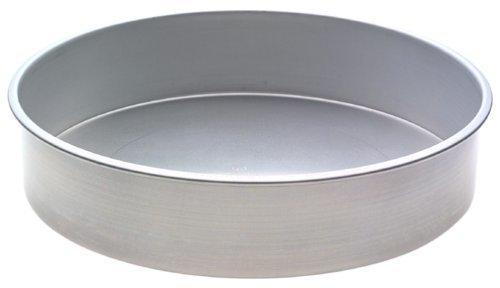
Most basic cake recipes traditionally require round cake pans. These pans are most commonly used for layer cakes and deep dish pies. Look for a set of two or three so that you can bake layers at the same time. Opt for heavy pans with no seams on the inside and at least 5 centimetres deep so that the batter doesn¿t overflow.
.
Square Pan
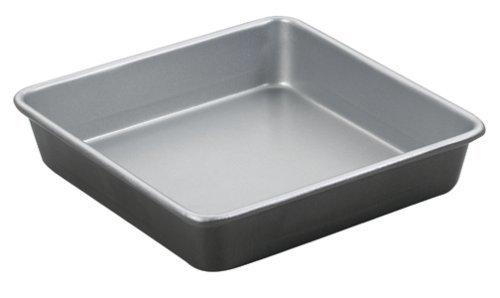
Square pans are most commonly used for baking brownies, bar cookies and square layer cakes. Look for heavy pans with no seams on the inside and at least 5 centimetres deep so that the batter doesn¿t overflow. Opt for aluminium if you plan to bake cookies and brownies, or glass for fruit desserts.
Rectangular Pan

A rectangular pan is most often used for single layer sheet cakes. Opt for the pan with slightly rounded side corners to make it easier to clean. This is one of the most versatile pans in the kitchen. You can use these pans to bake casseroles, lasagna or to roast meat and vegetables.
Springform Pan
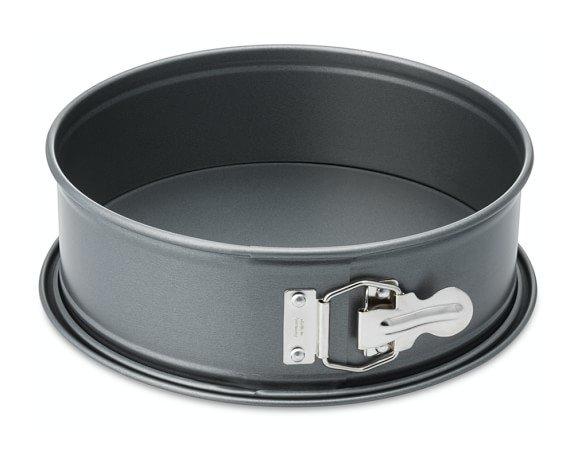
Springform baking pans have expandable sides that can be removed from the base. When the clamp is opened, the sides of the pan expand and release from the bottom. These pans are perfect for baking cheesecakes, tortes, quiches, and other cakes that would be damaged by turning them upside down to remove them from the pan. When looking for a springform pan, ensure clamps secure the sides tightly to the base to avoid leaking.
Tube Pan

A tube pan is a round pan with a hollow projection in the middle used to conduct heat through the center of a cake, ensuring that the cake bakes evenly. Tube pans are perfect for baking or molding foods in the shape of a ring such as fruitcakes and gelatin molds.
Bundt Pan
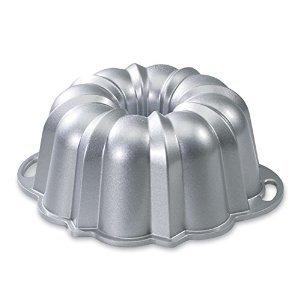
A bundt pan is a ring shaped pan with fluted or grooved sides. These pans are about 12 centimetres deep with a hole in the centere, ensuring that the deep cake bakes evenly while it is in the oven. These pans are typically made of aluminium but can also be found in silicone and other materials.
Loaf Pan
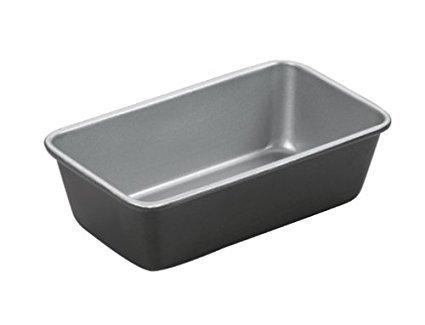
A loaf pan is a narrow deep rectangular container in which bead is baked. The function of this is to shape bread while it is rising so that it can enable uniform slicing. Perfect for baking bread, banana cake, pound cake, meatloaf and even terrines. Opt for metal, stone, glass and ceramic loaf pans when baking quick breads. Darker loaf pans are best for crusty yeast breads, while light aluminium is best for sweet quick breads.
Baking Sheet
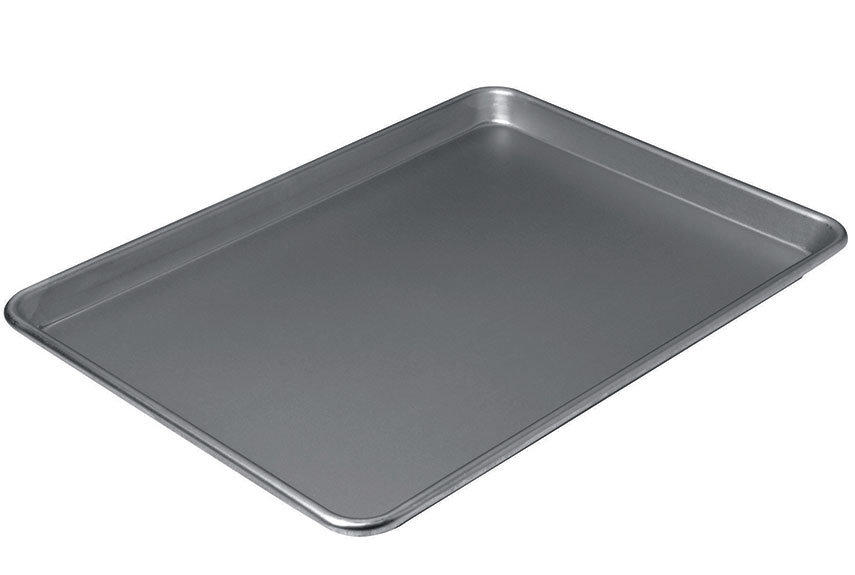
A sheet pan, baking tray or baking sheet is a flat rectangular metal pan with raised edges all around. They are a perfect all-purpose pan and can be used for everything from baking cookies, biscuits and scones to toasting nuts.
Jelly Roll Pan

A jelly roll pan is a smaller version of a baking sheet. These pans are known for making jelly roll cakes; however, they can also be used for roasting vegetables, toasting nuts and baking cookies and fruit.
Cupcake and Muffin Pan
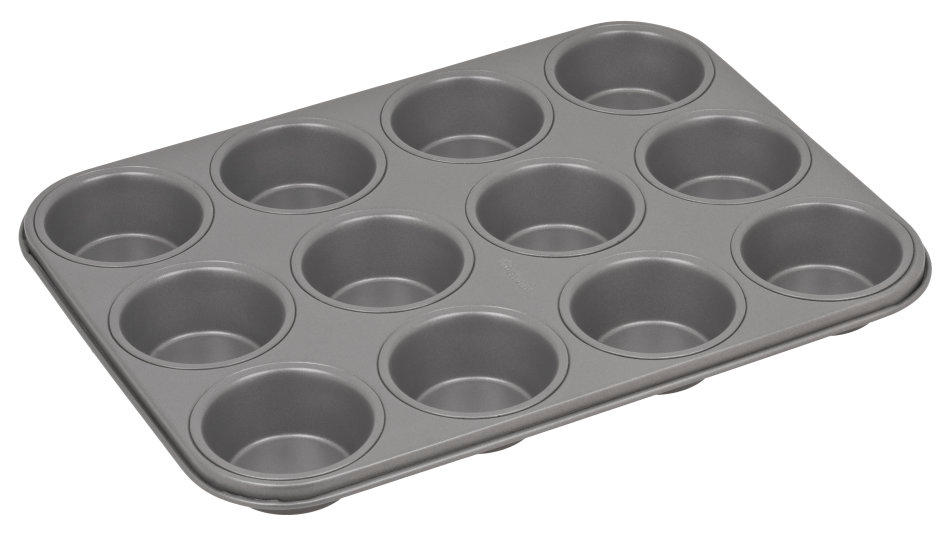
Cupcake and muffin pans are rectangular metal baking pans with six, twelve of twenty four cups. Each cup is normally lined with paper baking cups and then filled with batter. These pans are available in metal, aluminium and silicone. You can also use cupcake and muffin pans to make bread rolls, brownies, mini pies and truffles.
Tart Pan
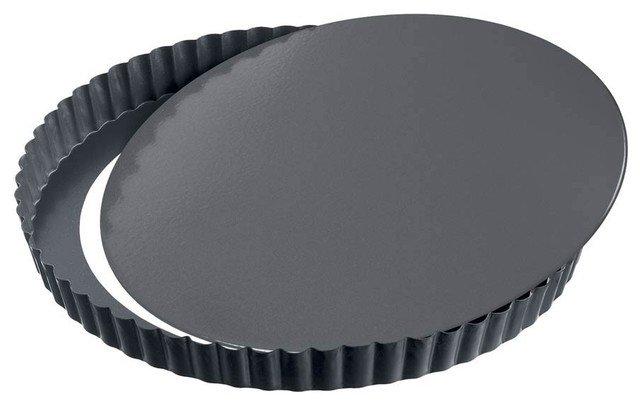
Tart pans have a fluted edge and often have removable bottoms, making it easier to remove the tart without damage to the delicate crust. They are only about 2.5 centimetres deep and are available in round, square and rectangular shapes.
Buy more baking supplies here!











